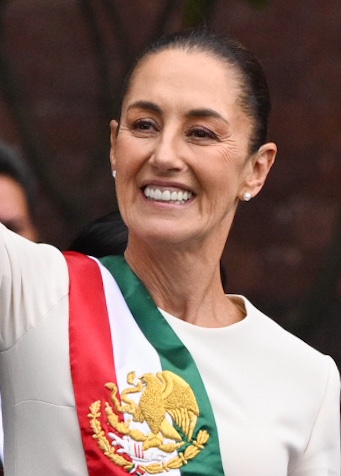The recent trip by President Hugo Chávez to Russia has been seen as part of the arms race in which the Bolivarian leader is engaged. However, facts indicate that Venezuela is far behind Washington’s two main allies in the region, Colombia and Chile, in the purchase of weapons.
Although Venezuela garners the headlines, as it turns out it is not the country at the forefront when it comes to acquiring armaments. In recent years Chile has purchased weapons valued at US$2.785 billion, Venezuela at US$2.200 billion, and Brazil, greatly lagging, occupies third place at US$1.342 billion. A recent report in the industry magazine Military Power Review affirms that the trans-Andean country has risen from fourth to third place in the "military capacity" ranking for South America, displacing Argentina from that position and approaching Peru, which continues to occupy second place.
Venezuela also rose one place, but continues to lag a considerable distance behind the most powerful countries militarily. Taking into account Defense spending as a percentage of Gross National Product (GNP), Chile takes first place as well, with 3.8% in 2005, followed by Colombia with 3.7%, a country which also benefited from a large amount of military aid from the United Status that amounts to US$3 billion since 2001 due to Plan Colombia and Plan Patriota. In 2005 Venezuela was still behind, with 1.6% of GNP in military expenditures, very similar to the percentage in the country before the arrival of Hugo Chávez’s government.
Arms and Copper
There is a permanent rise in the price of copper, parallel to that of petroleum, which increased by 400% between 2002 and 2006 in the international market. This explains to a large degree what the Instituto Nueva Mayoría in Argentina assesses as a "steady but gradual process" of rearming in the last 15 years, accelerated since 2003. In its report "Rearming: The Paradigmatic Cases of Chile and Venezuela and Their Regional Impact," the above mentioned think tank maintains that the Chilean Defense Ministry retains a large degree of autonomy when it comes to formulating its policies thanks to the Secret Copper Law that earmarks a certain percentage of the exports of the metal to the armed forces.
The Chilean military reduced its personnel in the last decade from 120,000 to 40,000, and it reorganized and created eight brigades, giving priority to mobility and fire power. Chile acquired 100 German Leonard II heavy tanks, retaining the ability to acquire several more, and 28 F-16 airplanes equipped with AMRAAN missiles and air-air laser bombs, unknown until now in the region. Of even larger impact is its purchase of two modern Scorpene Franco-German submarines as well as eight missile frigates, maritime patrol airplanes, and oil tankers. "Media experts have concluded that taking into account the relative sizes of Brazil and Chile’s GNP, the latter spends six times more economic resources on military equipment than the main power in the region," says Nueva Mayoría.
Venezuela Defends Itself
While Chile maintains excellent relations with the United States, its main provider of sophisticated weaponry reserved only for allies, since 2006 Caracas has withstood an embargo by the superpower in military weapons, equipment, and spares parts. Israel and Sweden could join this boycott. Since the May 2006 naval maneuvers carried out in the Caribbean by the United States, Holland, and Great Britain, alarms went off in Chávez’s country because they were the largest undertaken in the region since the Cuban missile crisis of 1962. In August of that same year it became known that the U.S. National Intelligence Agency had created a special post for specific intelligence and operations tasks for Cuba and Venezuela.
As of that time Caracas began purchasing weapons, but it had to resort to countries that do not have good relations with Washington, among them Russia, China, and Iran, although also Spain. Already more than 52,000 AK-103 machine guns have been delivered of the 100,000 bought from Russia to replace Belgian FALs dating back to the 1950s. It also seeks to buy anti-air M1 Tor missiles (similar to the ones just acquired by Iran), 24 SU-30 jetfighters, 30 transport and attack Mi-35 helicopters, all from Russia, and half a dozen Military Corvettes and a dozen Spanish transport airplanes.
Until now Venezuela has spent US$3 billion in weapons and now there is speculation that it could acquire between five and nine conventional submarines (diesel-electric). According to military analysts, despite the fact that the submarines are not of the latest generation, they "constitute a potential threat to any naval or amphibious operation," as shown by the Falkland Islands War, when a single, old Argentine submarine created enormous difficulties for the British forces.
Although it doesn’t amount to talk about a regional arms race, the truth is that Chávez appears to be developing a defense strategy. From the Iraq experience he has learned the importance of armed militias in the development of an asymmetric war in the face of a possible invasion. That explains the massive purchase of machine guns, which he might be in the position of manufacturing if negotiations to erect a plant in Venezuela come to fruition. At the same time, if he chooses to buy the submarines he might be indicating that the country may be preparing itself for an eventual blockade by sea that could disrupt petroleum exports.
In any case, it is best to take the above facts with a grain of salt. Venezuela depends as much on petroleum exports as the United Status depends on imports from that country. Imports of Venezuelan crude increased from US$15.2 billion in 2001 to US$34 billion in 2005. Venezuela is already the third largest exporter of petroleum to the United States, having displaced Saudi Arabia from that position.
occhiali ray ban
jordan retro 6
occhiali da vista ray ban
mulberry outlet uk
air jordan 23
mulberry uk
mulberry outlet uk
mulberry outlet
Cheap Ray Ban Sunglasses
basket jordan femme
toms outlet
mulberry outlet
lancel pas cher
cheap toms
cheap toms
hollister france
sac lancel pas cher
cheap mulberry bags
lancel pas cher



